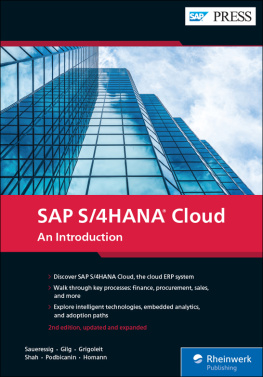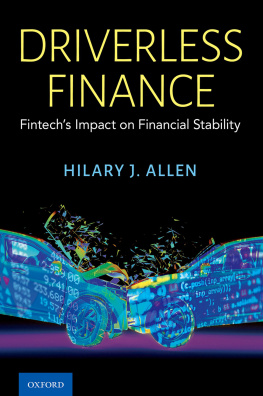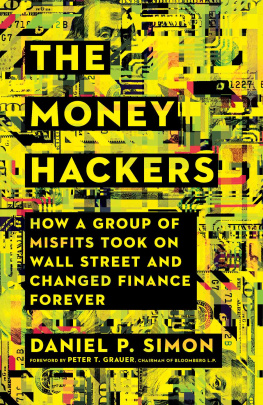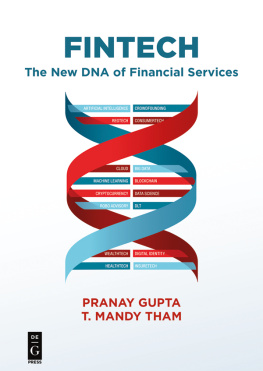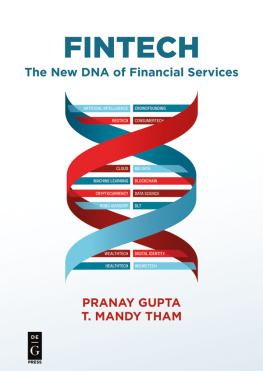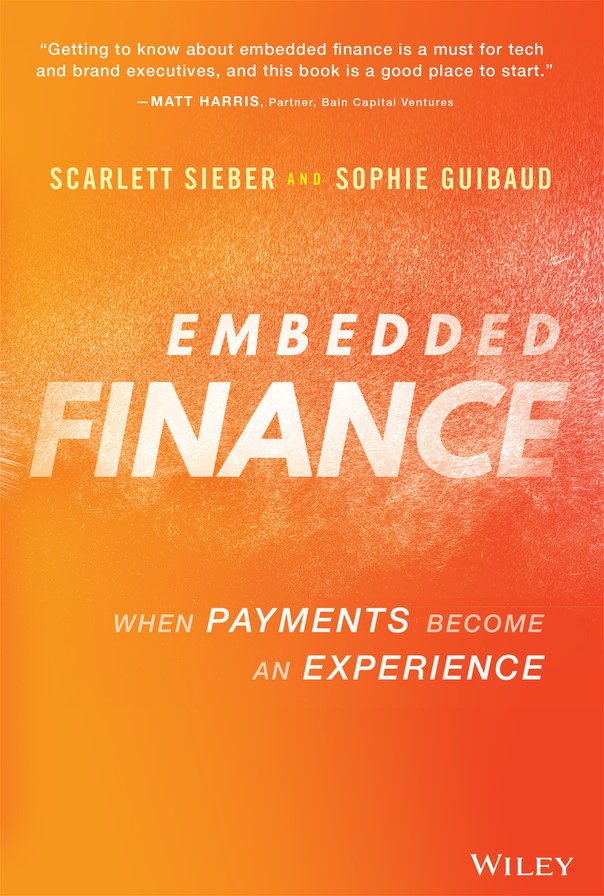
Table of Contents
List of Illustrations
- Chapter 2
- Chapter 3
- Chapter 4
- Chapter 6
Guide
Pages
Additional Praise for Embedded Finance
The next phase of insurance is going to see two directions: embedding insurance into real-world services that can be delivered or accessed digitally, and incorporating real world services as features or benefits into insurance products. Integrated digital providers have shown the path by redefining industry boundaries and bringing together value propositions in a powerful way.
Jonathan Larsen, Chief Innovation Officer, Ping An
Scarlett's and Sophie's combined backgrounds give them a unique perspective into the future of this space. Their strategic thinking, operational excellence and deep understanding of key players and technologies afford them background knowledge that few people have mastered. If you want to master it, too, read their book.
Jelena McWilliams, Chairman, FDIC
Embedding is not an incremental step forward, it's actually transformative. Eventually it's going to sound goofy to say you're a fintech company when such a large percentage of all technology companies and brands are leveraging embedded financial services. Getting to know about embedded finance is a must for tech and brand executives, and this book is a good place to start.
Matt Harris, Partner, Bain Capital Ventures
SCARLETT SIEBER SOPHIE GUIBAUD
EMBEDDED FINANCE
WHEN PAYMENTS BECOME AN EXPERIENCE

Copyright 2022 by Scarlett Sieber and Sophie Guibaud. All rights reserved.
Published by John Wiley & Sons, Inc., Hoboken, New Jersey.
Published simultaneously in Canada.
No part of this publication may be reproduced, stored in a retrieval system, or transmitted in any form or by any means, electronic, mechanical, photocopying, recording, scanning, or otherwise, except as permitted under Section 107 or 108 of the 1976 United States Copyright Act, without either the prior written permission of the Publisher, or authorization through payment of the appropriate per-copy fee to the Copyright Clearance Center, Inc., 222 Rosewood Drive, Danvers, MA 01923, (978) 750-8400, fax (978) 750-4470, or on the web at www.copyright.com. Requests to the Publisher for permission should be addressed to the Permissions Department, John Wiley & Sons, Inc., 111 River Street, Hoboken, NJ 07030, (201) 748-6011, fax (201) 748-6008, or online at http://www.wiley.com/go/permission.
Limit of Liability/Disclaimer of Warranty: While the publisher and author have used their best efforts in preparing this book, they make no representations or warranties with respect to the accuracy or completeness of the contents of this book and specifically disclaim any implied warranties of merchantability or fitness for a particular purpose. No warranty may be created or extended by sales representatives or written sales materials. The advice and strategies contained herein may not be suitable for your situation. You should consult with a professional where appropriate. Further, readers should be aware that websites listed in this work may have changed or disappeared between when this work was written and when it is read. Neither the publisher nor authors shall be liable for any loss of profit or any other commercial damages, including but not limited to special, incidental, consequential, or other damages.
For general information on our other products and services or for technical support, please contact our Customer Care Department within the United States at (800) 762-2974, outside the United States at (317) 572-3993 or fax (317) 572-4002.
Wiley also publishes its books in a variety of electronic formats. Some content that appears in print may not be available in electronic formats. For more information about Wiley products, visit our web site at www.wiley.com.
Library of Congress Cataloging-in-Publication Data
Names: Sieber, Scarlett, author. | Guibaud, Sophie, author.
Title: Embedded finance : when payments become an experience / Scarlett Sieber, Sophie Guibaud.
Description: Hoboken, New Jersey : Wiley, [2022] | Includes index.
Identifiers: LCCN 2022008545 (print) | LCCN 2022008546 (ebook) | ISBN 9781119891055 (cloth) | ISBN 9781119891079 (adobe pdf) | ISBN 9781119891062 (epub)
Subjects: LCSH: Financial services industryTechnological innovations. | Banks and banking.
Classification: LCC HG173 .S524 2022 (print) | LCC HG173 (ebook) | DDC 332.1dc23/eng/20220322
LC record available at https://lccn.loc.gov/2022008545
LC ebook record available at https://lccn.loc.gov/2022008546
Cover Design: Paul McCarthy
Cover Art: Getty Images | Jose A. Bernat Bacete
We dedicate this book to the people who have made it possible for two full-time working moms and wives to try to follow their dreams and share their passion with the world. To our husbands, and kids, we love you and we hope we are making you proud. To the rest of you, thanks for your continued support.
CHAPTER ONE
THE NEXT FINANCIAL REVOLUTION
Go back for a moment to the early 2000s and imagine hearing about a new phone concept that was going to be more than a phone. In fact, it was actually a mini-computer with most of the screen as glass. That concept would have seemed unbelievable at the time but of course we know now that the concept was the first iPhone. The story we are about to tell about another new concept is as exciting as that and will arguably have an even larger impact. This is the story about embedded finance. It's about a revolution in how people live, interact with, and manage their money.
The early versions of it are already here, whether you realize it or not. Embedded finance is changing how every company in the world, from the largest bank and tech company to the smallest mom and pop shop, does business and how they engage with you.
Part of the history of financial services is the separate but related story of financial technology, popularly known as fintech. Fintech emerged from a crisis in banking and delivered a smoother customer-centric experience with less friction. Have you sent money to a friend via Venmo, Zelle, CashApp, or another app? You were utilizing fintech. Have you used your phone or a tap of your card to pay for your groceries? You were utilizing fintech. What about opening up an account to directly invest in the market yourself through Robinhood, Acorns, or Public? You were utilizing fintech.
How did this technology transform banking, and who were the companies and entrepreneurs to make it happen? How did fintech change consumer expectations, and what impact did this have on banks strategies? These are all critical questions, because they were the basis of fintech, and fintech is the foundation for embedded finance. Fintech brought banks and technology companies together in order to create new products and serve the digital-centric customer. As we will see throughout this book, embedded finance completes the journey fintech started.
The embedded finance revolution is fundamentally about the seamless movement of money that keeps our society functioning. The friction, the barriers that slow it down, are disappearing. Everyone knows that in most cases, we no longer have to wait in line at a bank branch to complete basic transactions. You can do all (or most of) your transactions from the comfort of your home through your phone or your computer. But it's getting even easier than that. Your moneyor rather, your access to your moneyis everywhere. It appears when needed at every point of context, instantly and transparently. It's a natural evolution powered by genuine consumer need, enabled by technology. This is a cool concept, but what does this look like in practice?
Next page

